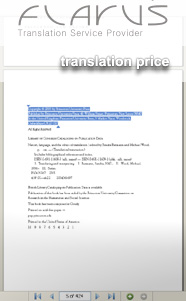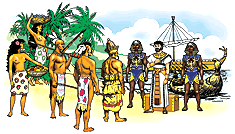|
|
|
|
|
|
|
|
|
|
The cheap translation |
|
|
 There were marked out several groups of translations in the context of the complexity in the practice of the translation agencies. Simply said, there are complex and easy translations. The conventional border is marked regarding the time the translator spends to do the translation and the copy editor spends for proofreading.  Our statistics showed that the correspondence of the easy and the complex translations is one to two. Our best translators (not more than 20% of the entire agency’s staff) made complex translations, the easy translations were a helping hand and a practice material. It was a compensation bonus for us and our translators. The translators and the agency earned the same sum of money by making easy translations as well as complex ones with much less working hours. We could redistribute the saved time to the complex translations and partially compensate their complexity.
It takes place as long as the clients do not try to economize and then easy translations drop out of translation agencies orders. They are transferred to the area of the responsibility of the secretaries, personal assistants, students, and freelancer translators. Many of the companies that applied for translation agencies’ services can manage the translations by their own efforts or try to collaborate with freelance translators. Typically, the regular staff uses the machine translation system and updates the text they have. That means that apart from the total reduction of order volume there is the quality level reduction of the translations.
Принц Чарльз был отправлен в университет Аберистуита, чтобы выучить валлийский язык в течение семестра в 1969 году перед его инвеститурой в качестве принца Уэльского – но, в конечном итоге, он вызвал "личное разочарование" своего учителя. |
Now each client sends a translation request to several agencies and selects a service provider based on the price. If the price of a translation is a decisive factor, then what about the criteria for the quality of a translation? Can possible errors and shortcomings do more harm than saving on translation services will create benefits. |
2022 жылы аударма агенттіктері мен жеке аудармашылардың жартысына жуығы өз тарифтерін көтерді. Бұл іс жүзінде қалай көрінеді, көптеген нұсқалары бар. |
За 2022 год около половины бюро переводов и частных переводчиков повысили свои ставки. Как это выглядит на практике, имеет множество вариантов. |
We have received many questions from potential clients: how can we guarantee the quality of translation, editing, proofreading, and what to do if errors remain in the text? To be honest, we almost never answer this question. But for a blog post, we`ll try to explain why. |
Recently, our regular client, a patent attorney, asked us to participate in the procedure for filing a patent application (the applicant is an individual) in the Emirates. |
На нашем сайте есть подробные инструкции для расчета стоимости перевода различных текстов в различных форматах файлов. Однако все чаще мы стали получать запросы, похожие на тот, что в заголовке. Стало очевидным, что требуется краткий ответ на конкретный вопрос вместо инструкции на все случаи и исходные данные. |
The number of people claiming to be translators and offering translation services nowadays is huge. This resulted in the lower price for translation services making it more attractive for customers but at the same time creating certain difficulties for those who is looking for real professionals devoting all their lives to this job. |
When calculating the translation cost, most translation companies take one word of original text or page (~ 250 words) as an accounting unit. As for Chinese, Japanese, and Korean, 400 hieroglyphs are taken as an accounting unit.
|
Показать еще
|
|
|
|
| | | |                                 | | | |
 |
Latest translation:
"Коммерческое предложение / Commercial offer
", Маркетинг и реклама
translation tags: развитие, экономика, материалы.
Translations in process: 92
Current work load: 67% |
|
 |
| | | |
 |
Экспорт контента сайта на системе Liferay
Подготовка контента сайта для перевода на другой язык, локализации и создания языковой версии сайта. Процедура экспорта контента сайта, формат файлов экспорта. Стоимость перевода сайта. |
|
 |
| | |
| |
|


